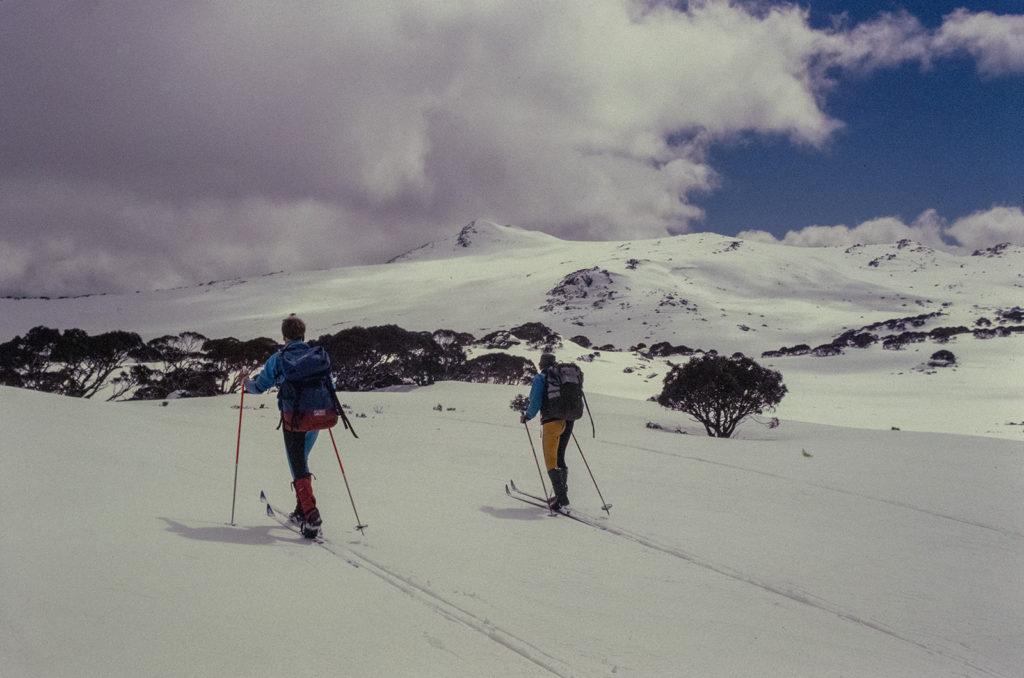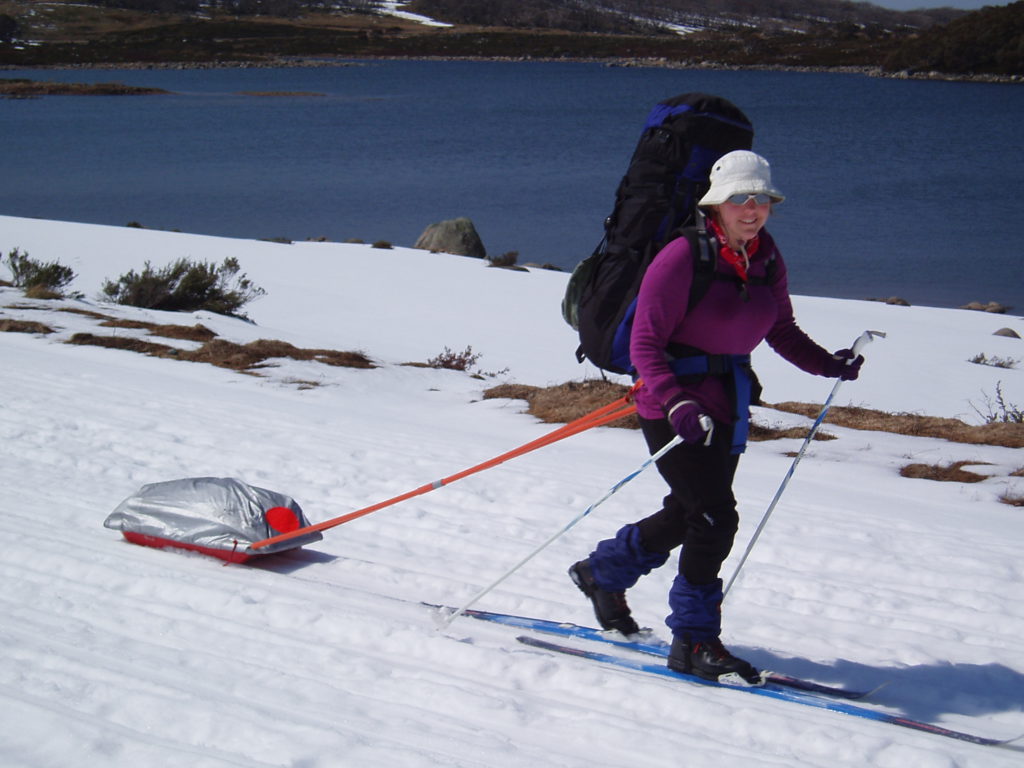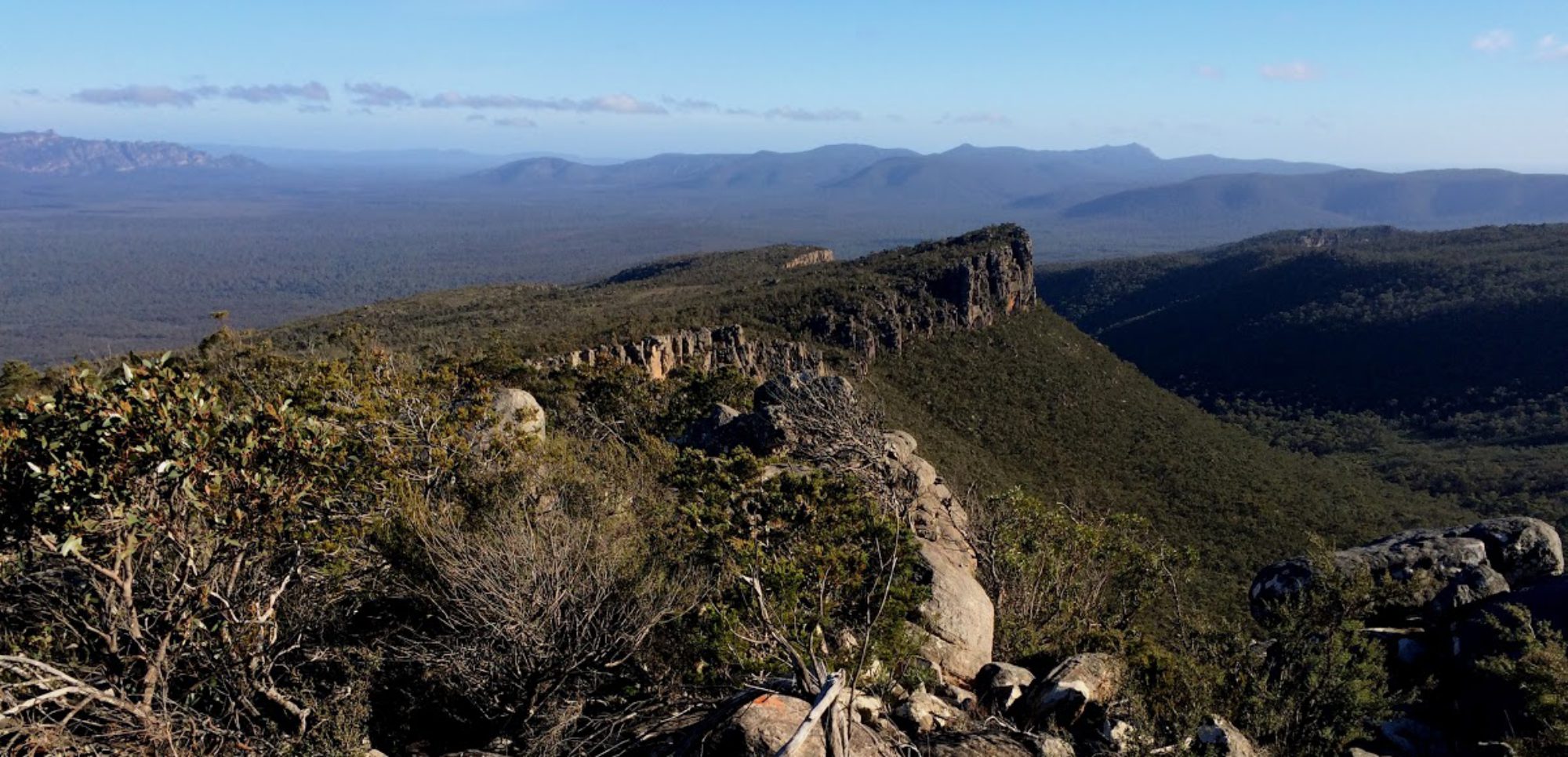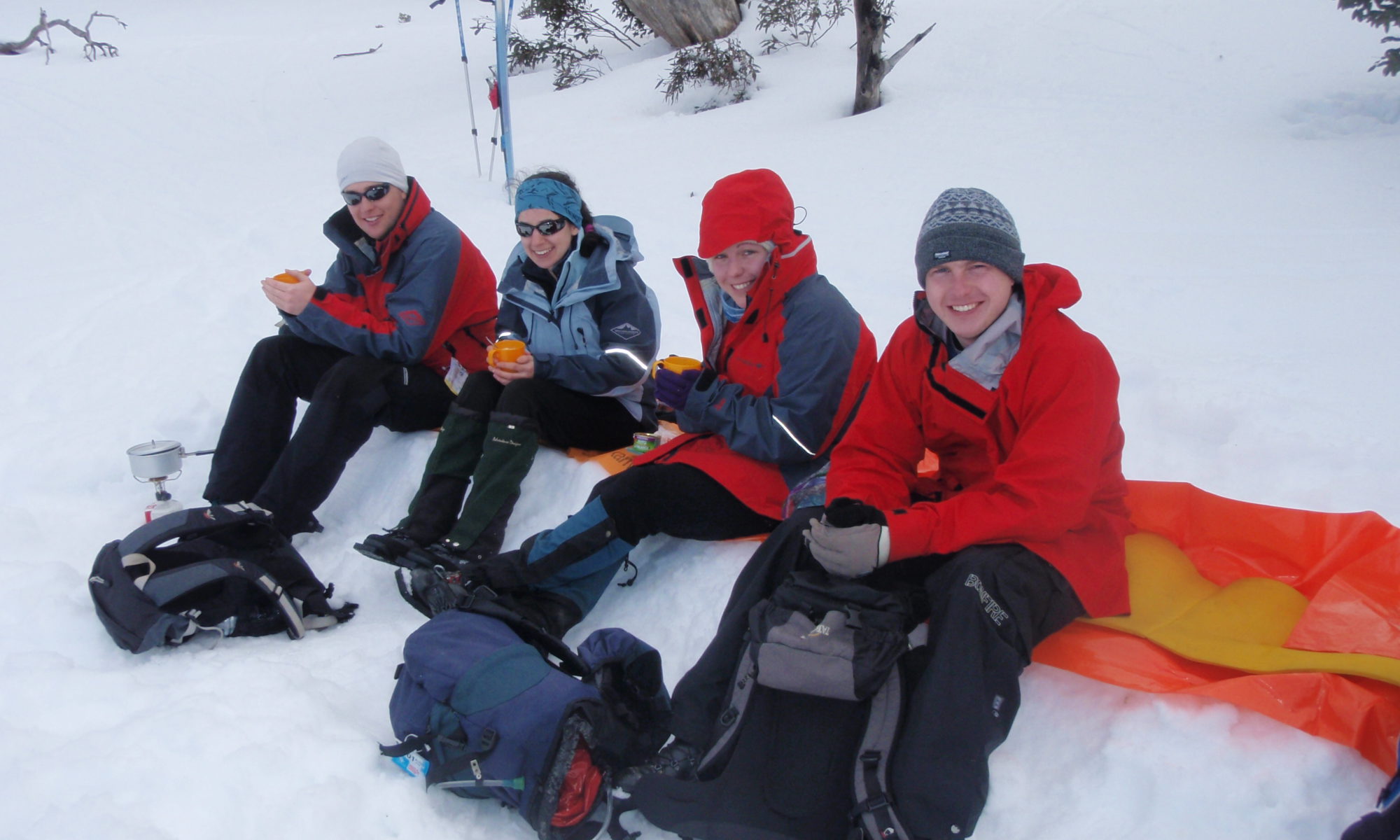Reading Time: 5 minutes
Ski touring can be regarded as ‘bushwalking on skis’ and offers an additional dimension to enjoying alpine landscapes when under a cover of snow. Departing groomed ski trails and busy resorts to make fresh tracks in pristine alpine environments provides new challenges, experiences and a sense of adventure.

The terms cross-country skiing and ski touring are used interchangeably. Cross-country skiing is a popular sport and recreational activity. Cross-country ski equipment is light compared to downhill ski gear so as to provide better mobility and non-reliance on ski tows. The lightest cross-country equipment is used by those who ‘race’ on skis around groomed trails. The equipment used for ski touring varies from light cross-country gear through to heavier ski touring equipment such as wider skis with metal edges and plastic boots. Equipment should be hired or borrowed when starting out, to avoid purchasing skis that don’t suit.
Gaining and using a combination of basic skills; diagonal stride, herringbone, traversing, kick turns, side stepping, side slipping and snowplough turns makes it possible to ski with confidence over snow-covered terrain. Travelling through difficult terrain and in different snow conditions requires appropriate use of a range of skiing techniques.
Ski tours are often along snow-covered roads and tracks. Each winter, many kilometres of groomed cross-country ski trails are available commencing at trailhead car parks and ski resorts in Victoria and New South Wales.
Some bushwalking clubs undertake ski touring trips of various levels of challenge with experienced leaders that can provide good opportunities to learn from others. There are also specific nordic ski clubs that offer day trips and longer ski tours for members. Lessons in ski techniques are also available from cross-country ski schools at many ski resorts.
When travelling to alpine areas in the snow season vehicles also required some specific preparation. See Vehicle preparation for more information.
Day tours
Day tours are popular, having the benefit of being able to choose good weather and snow conditions. Day tours from resorts or trail heads provide easier access with cleared roads and organised parking. Assistance is available, if needed, and quicker retreat to shelter from bad weather is possible. Most resorts have a day visitor shelter that is handy.
Skiing with light packs makes it possible to:
- Gain experience skiing in varying snow and weather conditions
- Travel greater distances and explore more areas
- Practice ski techniques with ease of movement
Multi-day tours

As skills, confidence and experience grow, longer trips in more difficult terrain and variable snow and weather conditions can be undertaken.
Ski touring away from resorts and off groomed trails, like off-track bushwalking, requires good navigation skills and involves route-finding.
Everything is more strenuous when skiing with a heavy pack, not just climbing hills. Even skiing downhill takes greater effort and concentration to keep balanced, particularly when turning and stopping. A good level of fitness and good technique are required. It is important to always ski in control, but more so when carrying a heavy pack as the risk of falls and injury is greater with the added weight.
During a multi-day tour skills, experience and equipment are required to cope with the range of conditions that may be encountered. These can include heavy rain, blizzard, whiteout and gale force winds.
Snow camping also requires additional knowledge and equipment to ensure safe and comfortable nights.
Setting up a base camp in a sheltered location near a hut or using a hut as a base provides the opportunity to do day trips to explore the area and ski the nearby slopes. Camping near huts has the advantage of a toilet located nearby.
Skiing hazards
Some hazards to be alert for include:
- Sunburn. Snow reflects up to 90% of UV radiation on a sunny day. Protect all areas of exposed skin, including under the chin and nose, with an SPF 30+ sunscreen and lip balm to avoid sunburn.
- Snow blindness. This temporary loss of vision is caused by an overexposure of the eyes to UV rays and can be painful. It is easily prevented by wearing wrap-around sunglasses or snow goggles.
- Falls. Falling and getting up again is tiring and can result in injuries, especially when carrying a heavy pack. Proficiency in ski techniques and knowledge of when to use a particular skill helps minimise falls. Learning to stand up after a fall is equally important, particularly when on a steeper slope or in soft snow.
- Breakable crust. A thin layer of icy crust on the surface of softer snow makes turning very difficult as the skis tend to break through the crust and falling is much more likely. An icy crust on flatter terrain offers less grip and it may be safer to carry skis and walk.
- Icy slopes. Most slopes are icy early in the morning and south facing slopes can often remain icy during the day. Avoid skiing icy shaded slopes as even a fall on a gentle slope may result in injury. Soft spring snow can turn icy late afternoon when out of the sun. A fall on a steep icy slope is very dangerous and it is important to know how to self arrest.
- Skiing between trees can be fun, but catching a ski or pole tip can result in a fall and potential injury. Ski with hands out of pole straps and avoid shaded areas as they will often be icy.
- Rocks and obstacles can be buried just below the surface. Take care in soft deep snow.
- Snow-covered creeks, rivers or tarns. Beware of crossing such obstacles as snow and ice can collapse resulting in a fall into very cold water and onto an uneven rocky creek or river bed. Snow banks or slippery icy edges make getting out of the water with skis on much more difficult and cold water immersion may incapacitate the person.
- Downhill resorts. Access to some popular ski touring areas begins at a downhill ski resort, resulting in downhill skiers and snowboarders sharing sections of trails with cross-country skiers. Exercise great caution when crossing downhill runs and at ski trail junctions to avoid collision with other skiers or snowboarders. Give way to skiers coming downhill and keep to the left. If needing to stop, move to the side to allow others to pass.
- Whiteout conditions. When daylight visibility is reduced to the point where the sky and snow-covered landscape appear to become almost indistinguishable there is a significant risk of becoming completely disoriented and losing the sense of which way is up. Skiing in such conditions is very hard as dips and changes in snow conditions cannot be seen. Keeping the group close together in a whiteout, especially on a downhill slope can be difficult, but if separated it will be very difficult to find each other again. Navigation is extremely difficult with no horizon or other points of reference. Ski slowly guided by a GPS or map and compass. Dropping below the tree line (if possible) makes navigation easier. Use pole lines or resort boundary ropes as guides where possible.
- Cornices develop where wind deposits snow on the lee side of a ridge. They can break off without warning. Don’t ski near or below a cornice.
- Avalanches. Although not common in Australia, avalanches do occur and have resulted in fatalities.

